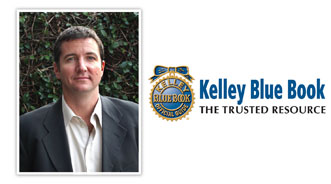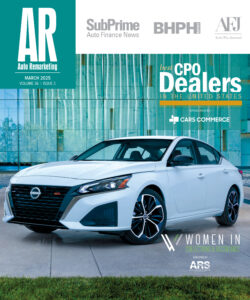Where Is Toyota One Year Later?

IRVINE, Calif. -
While 2010 was a tough year for Toyota, according to Kelley Blue Book, it could have been worse. Or at the very least, the recall troubles could have come at an even more inopportune time. Why?
Well, according to the company’s analysis revealed in its special report “Toyota: One Year Later,” while the automaker’s annual sales were flat, used values actually performed relatively well. Also, residuals, while losing some momentum, didn’t tank.
“With the overall industry down in 2010, Toyota likely did not lose nearly as many sales at it would have if the market had been strong. Additionally, its competitors, some with their own baggage, weren’t in a position to really exploit Toyota’s overall weakness during its months in the barrel of media criticism. Finally, by sheer happenstance, Toyota was in a relatively fallow year anyway, with few important new-model introductions occurring. Happily for the corporation, it was not in the midst of an all-new Camry or Corolla launch when the spate of bad publicity hit,” explained Jack Nerad, executive editorial director and executive market analyst.
“With a mammoth war chest of revenues gathered during its solid days, Toyota has been able to maintain reasonable sell-through volumes, and we expect that this year, as memories of its problems fade and new models roll into showrooms, it will regain much of its lost mojo. The best news for Toyota is that it had built up a huge amount of goodwill over the course of five decades in the U.S. market, so one bad year was far from sending it, like the Titanic, to the bottom of the ocean,” he continued.
Values Held Relatively Strong
Despite the bad publicity Toyota faced, its used-car values held strong throughout the year, according to Kelley Blue Book.
“Even with Toyota’s turbulent year, the brand generally performed in line with the rest of the used-car market. Immediately following the recall announcement, values dropped slightly, but by year-end, they stabilized and in some cases fully recovered. Retained values fell only 3 percent for the year as the overall market increased 1 percent,” explained Juan Flores and Alec Gutierrez, of KBB.
In fact, the executives said the results were quite strong for Toyota, especially considering that Honda and Hyundai each depreciated more than Toyota for the year and neither brand saw high-profile recalls.
“Among the best performing Toyota models were the RAV4, Camry, Highlander, Sienna and Yaris. Each of these vehicles benefitted from the respective segments in which they compete by offering comparable or better than average fuel economy in an affordable package. In today’s economy, value is more important than ever and these vehicles have remained in high demand for this reason,” Flores and Gutierrez agreed.
However, the Matrix, Avalon, Tundra, Sequoia and Venza underperformed the overall market.
As for Lexus, it was a bit of a different story. KBB found that this brand underperformed during the year with an 8-percent decline in used-car values.
“However, it should be noted that the overall luxury segment did not fare well in 2010 (dropping between 6.7 and 12.5 percent), as consumers looked for ways to save given the state of the economy,” executives highlighted.
“Lexus’ best-performing models include the IS, RX and LX, while ES, GS, LS, SC and GX experienced heavy drops in this segment. Lexus’ performance in the market is related to the luxury segment’s decline, more-so than recall woes,” Flores and Gutierrez stressed.
New-Vehicle Sales
Overall, Toyota’s new-vehicle sales for the year were flat while much of the rest of the industry improved. KBB pointed to heavy incentive spending as helping along new-car demand.
“While Toyota launched aggressive incentives in March 2010 during the midst of the recall crisis, overall the company’s incentive spending for 2010 was in line with its competitors. However, despite relatively flat sales for the year, Toyota’s loss of new-car market share in 2010 was very pronounced, as consumers seemed hesitant to purchase new Toyota vehicles,” the company reported.
Consumers Remain Hesitant
While Toyota’s sales were down just a bit in 2010, KBB stressed that its loss of market share was “far more pronounced.”
“Since the recall, consumers have shied away from Toyota while most of its key competitors increase share (Honda excluded). It is obvious the recall had a more impactful effect on perception of Toyota’s new-vehicle build quality, rather than used-car depreciation. In addition, Toyota’s vehicle designs have been rather conservative over the past several years, lessening the demand for these models,” the company revealed.
Breaking down the year-over-year change in market share by brand for new sales, KBB reported:
Toyota
2010: 12.8 percent
2009: 14.3 percent
Honda
2010: 9.5 percent
2009: 10 percent
Chevrolet
2010: 13.5 percent
2009: 12.8 percent
Nissan
2010: 6.9 percent
2009: 6.6 percent
Ford
2010: 15.1 percent
2009: 13.8 percent
Hyundai
2010: 4.6 percent
2009: 4.2 percent
Interestingly, comparing the results of two different Market Intelligence Wave Studies, one from late January to early February and the second conducted from late December into very early January, KBB discovered that defection for Toyota has dropped 6 percentage points over the last year from 20 percent in the first study.
Forty percent of survey participants apparently believe that Toyota has adequately solved its recall-related problems, and almost one quarter believe that the brand’s vehicles have improved since the recalls.
“However, while many agree that Toyota has resolved its problems, most car shoppers are evenly split when it comes to whether or not Toyota continues to have problems, but many said they will consider Toyota in the future. Overall, most car shoppers are not concerned about the longevity of the Toyota brand,” analysts explained.
The company found that Toyota’s purchase consideration peaked in the second quarter of 2008 thanks to record gas prices, but toward the end of 2009, the automaker was beginning to see challenges and consumer consideration began to decline. However, there appeared to be a bit of a reversal when Toyota started offering hefty incentives in March of 2010 and consumers became re-engaged with the brand, KBB reported.
Reviewing new-car shopper activity on KBB.com, the company found that Toyota’s overall traffic is down 6 percent year-over-year. The Corolla, Camry and RAV4 saw downswings in traffic, while the Sienna, Prius, Highlander and Tacoma saw upswings.
“Shoppers generally moved away from Toyota’s recall-laden sedan/small-car segments in 2010, while traffic increased for many of the brand’s larger vehicles, including the new Sienna (made popular by the TV and Internet sensation ‘Swagger Wagon’ campaign), the successfully redesigned Highlander and the Tacoma (which benefitted from increased interest across the pickup truck segment throughout 2010),” analysts said.
Toyota Maintains Second Place Residual Brand Standing
Continuing on, KBB also addressed expected residuals on Toyota’s new vehicles.
“For the 2010 model-year, Toyota and Lexus were projected to have the best five-year residual values of any brand. However, both brands were subjected to a very difficult 2010, with recall troubles, declines in the strength of smaller cars and an aging fleet,” KBB officials explained.
In fact, 2010 Toyota vehicles were expected to maintain 38.8 percent of their MSRP after five years.
“Even after the rough year the brand endured, the 2011 Toyota brand average experienced only a minor 0.3-percent drop to 38.5 percent. Lexus took an even bigger hit, falling to a 36.4 percent average in 2011 from 39.3 percent in 2010, primarily due to aging designs rather than stigma left behind from safety issues or recalls,” executives highlighted.
KBB analysts pointed to softness in the compact segment, which was due to stable gas prices, for likely pushing specific Toyota models such as the Prius, Yaris and Corolla down 5, 3 and 3 percentage points, respectively.
The Prius was redesigned for 2010 and now will expand the brand into more hybrid offerings, bringing improved fuel economy and a reduced sticker price, officials noted. However, it will also see more competition with the Honda Insight and the Lexus HS.
Both the Insight and the HS have struggled to find mass-market favor and thus are expected to experience declines in their 2011 residual values, dropping by 3 and 8 percentage points, respectively, KBB pointed out. Additionally, the Prius has declined by 5 percentage points from 2010 to 2011, analysts added.
Furthermore, this year is bringing the plug-in Chevrolet Volt and full-electric Nissan LEAF, both of which are expected to sell in low volumes. However, they stand as potential image-changers for both manufacturers and garner much in the way of perceived technological leadership, KBB officials stressed.
“Residual values in the compact and fuel-efficient segments dropped across the board severely impacting Toyota, which has some of the most fuel-efficient vehicles currently on the market,” pointed out Eric Ibara, director of residual consulting for KBB. “While residuals among the smaller cars in Toyota’s stable are down from 2010, the brand mitigated these drops with increases in residual values among the 2011 model-year Sienna, FJ Cruiser and Sequoia, all of which are up more than 3 percent points year-over-year. This helped Toyota to maintain its second-place brand residual standing behind the top brand Subaru for 2011.”
Ibara went on to say, “Overall, Toyota’s values navigated the gauntlet of the recall well, with little lasting effects on its residual values. Kelley Blue Book analysts believe the mild residual value declines Toyota experienced in the last year were caused by factors unrelated to the recalls, including its aging lineup, declining values among the fuel-efficient car segment, heavy incentive spending and more. While we witnessed drops in used-car values immediately after the recall last year, we do not expect the Toyota recall crisis of 2010 to affect the long-term outlook for the brand’s residual values over time.”
Looking Ahead
James Bell, executive market analyst for Kelley Blue Book, believes that Toyota needs to focus on product design and development in addition to safety to overcome its fierce competitors and reach the sales levels of 2008 and 2009.
“In many ways 2010 was a clear year of reckoning for Toyota, as assumed notions of quality and overall appeal were called into question. However, Toyota’s challenge is much more than just re-establishing lost consumer confidence and trust, as proven by the success of these previous weak competitors. Rather, Toyota must use its incredibly deep pool of talent and resources to redevelop its vehicles into objects of desire, in addition to regaining the company’s reputation as a consumer’s ‘safe and economic choice,’” Bell said.
Moving on, 2012 will bring refreshed versions of the Camry and CUV RAV4, with a new Corolla to debut in the 2013 model-year. Kelley Blue Book indicated the recalls of 2010 will help to force Toyota to focus on the importance of these vehicles and use them as stepping stones toward redemption.
“In addition, Akio Toyoda has a well-publicized passion for speed and exotic cars, and this spirit could help reset Toyota’s course toward a lineup of exciting and energizing vehicles that also deliver on the company’s long-held reputation for durability and efficiency,” Bell concluded.

 View The Latest Edition
View The Latest Edition

